Stops: Malkinia Station, Stacja Treblinka, Muzeum Walki i Męczeństwa w Treblince (Day 178)
Web guides don’t really recommend going to Treblinka. “The museum is not that great, and there is nothing there.” Ratings on TripAdvisor? Really? The web suggests Auschwitz as somehow “better.” But, Trebinka was a good choice for me. Recent flooding made me skip Krakow, and I’ve had enough recent experience of large school groups trips–well and poorly chaperoned–to realize I might not want to share a visit to a concentration camp with a bunch of high school or college kids. Too much like work. And, not sure how I would react if the groups were not sufficiently solemn.
The station staff in Warsaw cautioned me that there is no transit from Malkinia Station (one hour from Warsaw) to the museum and concentration camp. It’s about 8 km each way, so not a bad walk on a sunny late summer or early Autumn day. Most of the route is along an intercity bypass road that follows the old rail bed. Semis and SUVs zip by.
Nine in the morning. Nothing much near the station. Aggressive dogs. A couple of empty rickety shacks as shops in the front yards of houses. Bus stop benches long disused as the local line has stopped. Everyone has cars now. Reminded me of walking through some rural parts of Indonesia. Along the highway, the industrial land gives way to pretty, if unremarkable, open countryside of marshy woods and agricultural land. A couple of fishermen with a small boat at a campground by the river. Low flying geese pass over head. The sun is warm.
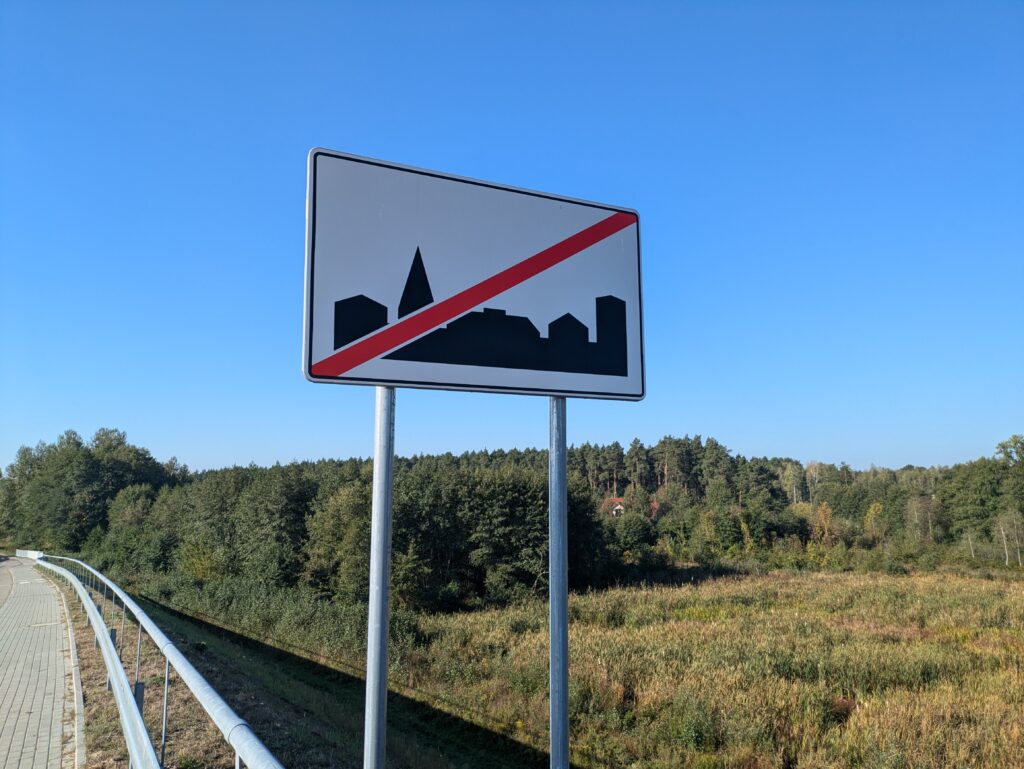
Malkinia “city” limits.
When possible, I swerve off the direct route and turn onto the local roads towards the village of Treblinka. At the turn off from the highway, there is a pull off area and a small memorial where the station used to be.
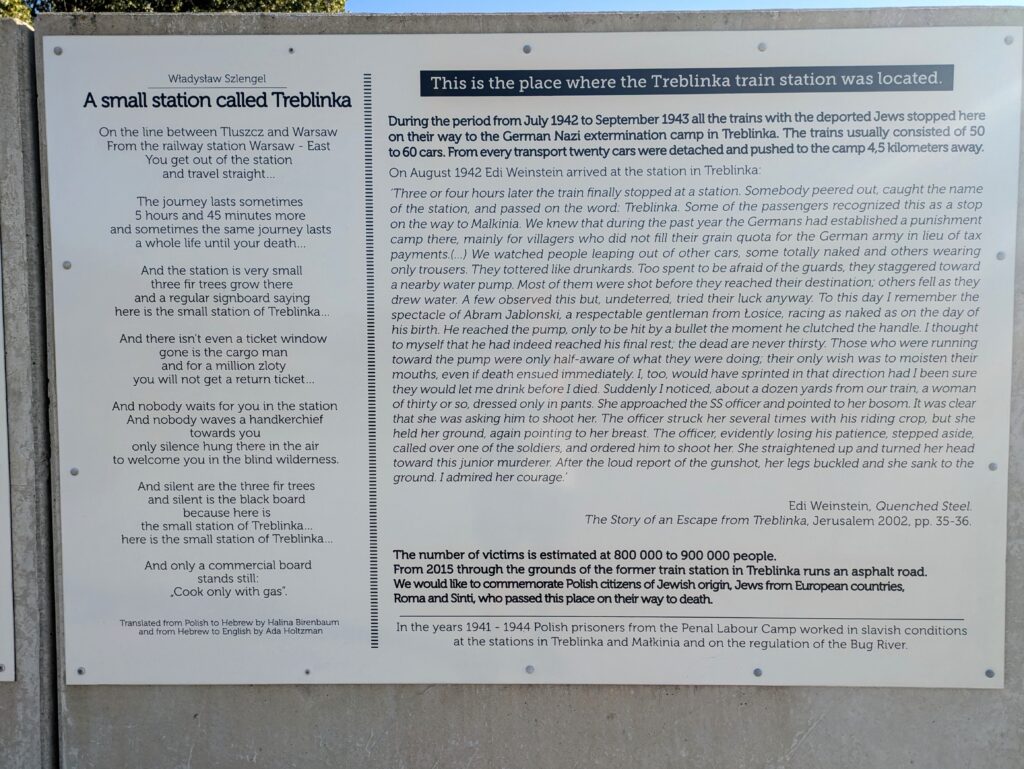
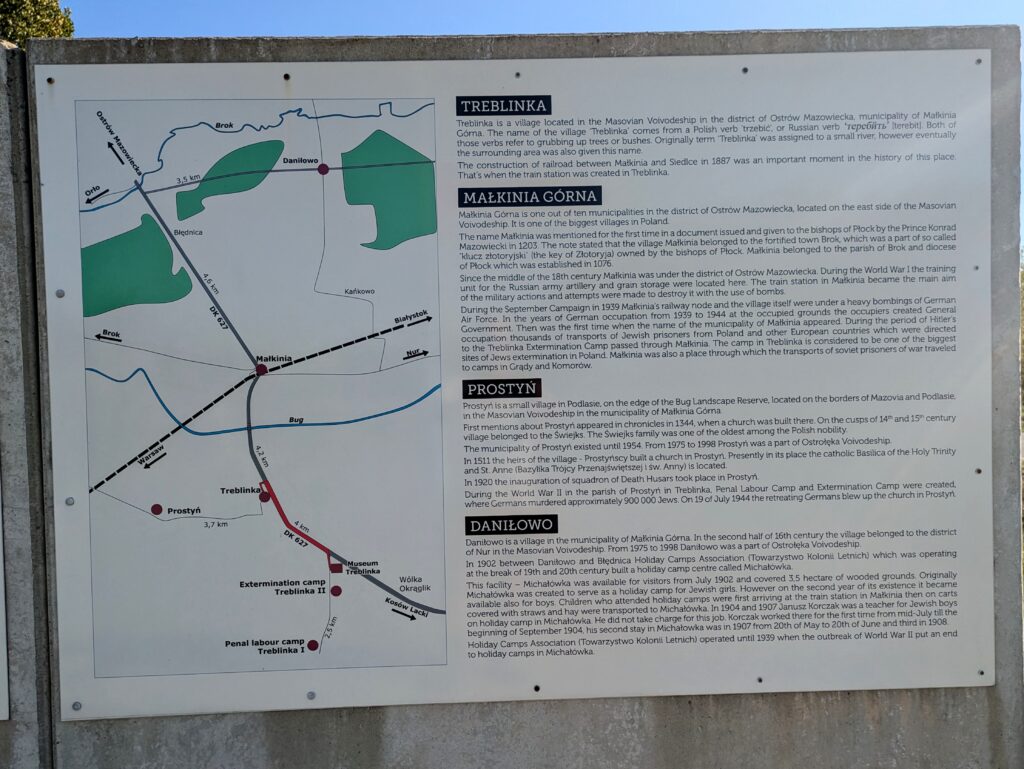
Excerpt from the sign: In 1902 between Danilowo and Blednica Holiday Camps Association which was operating at the break of 19th and 20th century built a holiday camp center called Michalowka. This facility–Michałowia–was available for visitors from July 1902 and covered 3.5 hectare of wooded grounds. Originally Michałówka was created to serve as a holiday camp for Jewish girls. However on the second year of its existence became available also for boys. Children who attended holiday camps camps were first arriving at the train station in Malkinia then on carts covered in straws and hay were transported to Michalowka.
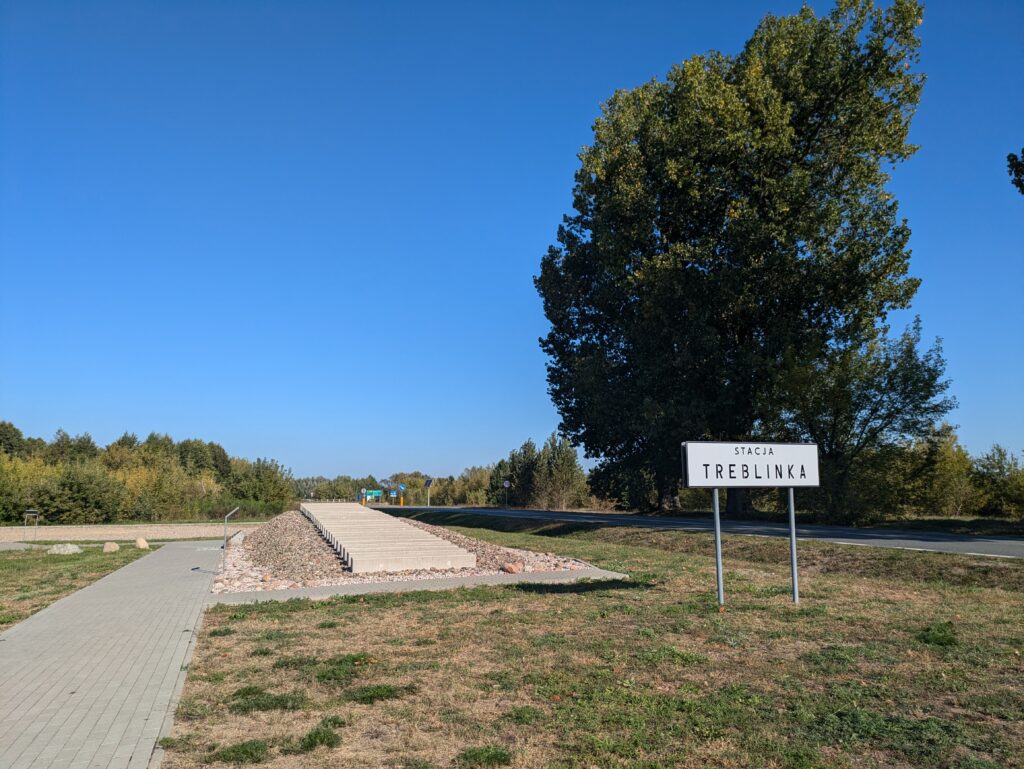
I move on through a small settlement at the edge of the village. A few modest older houses and cottages clump along the roads. An old woman is picking pears. Several small shrines to Jesus or Mary. Fresh bales of hay both–big modern rolls and older brick style. Clods of manure ground into the asphalt by passing cars. A few new-built suburban style homes with nice lawns. A children’s play pool and a trampoline in the front yard. Gazebos. As I walk through wide agricultural fields back to the main route, lines of old pollarded trees edge the plots. As the fields get larger, the simple tree lines give way to electric fences.
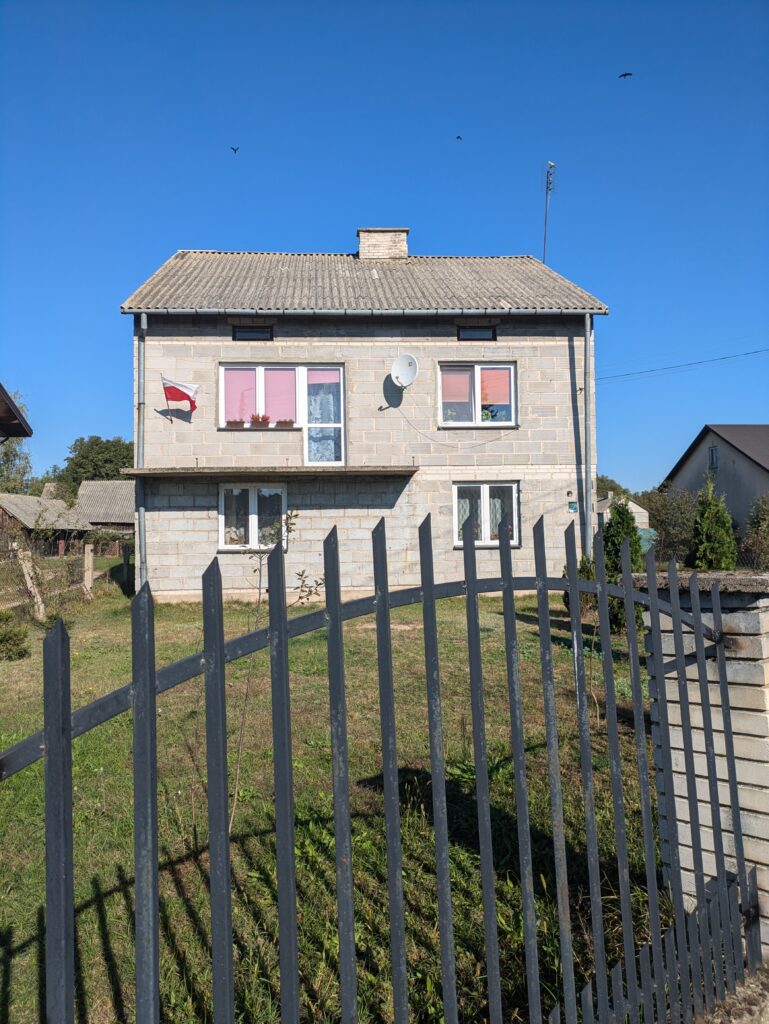
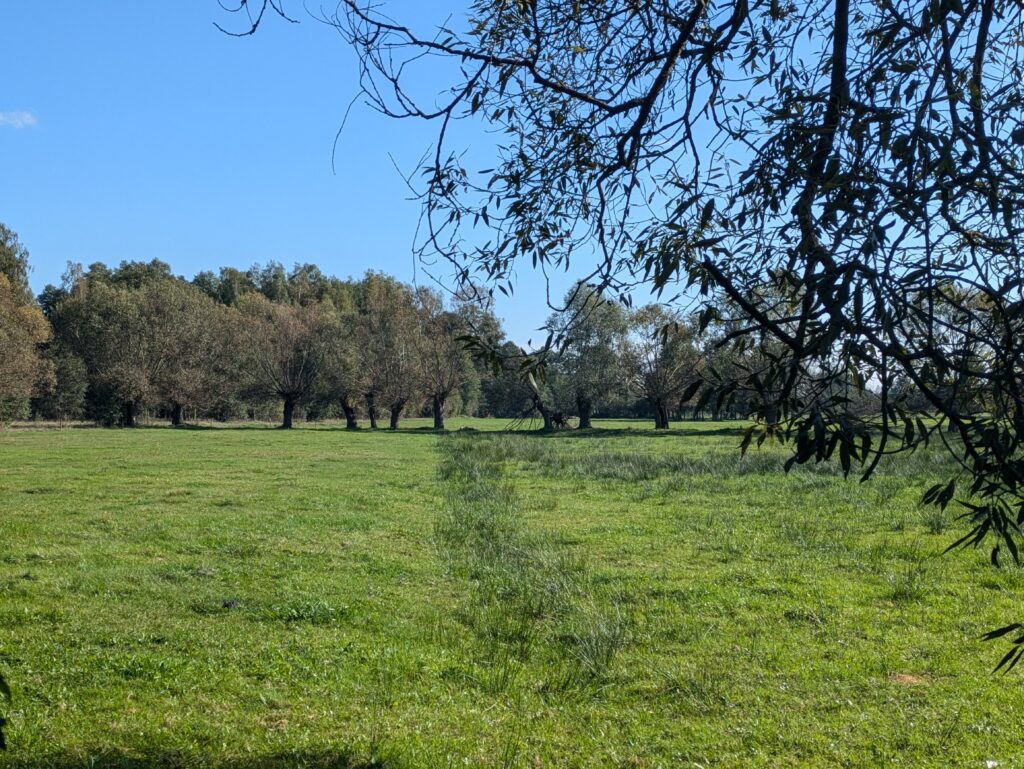
Almost nobody is here. Nobody else is walking along this path. One cyclist zips by the other way. I think this was a wise choice. Solitary time to walk. And, by walking, think. Hiking quietly to a site like this feels better than a busy tour bus..
To be honest, I was a little ambivalent about whether I should go to one of the Holocaust memorial sites. But spending a week in Poland without doing so? Of course I know the reasons to bear witness and re-assert the message of never again. But why me and why me now? I saw The Killing Fields and S21 Tuol Sleng Prison in Cambodia. It was profoundly depressing in an unexpected way. Not because of the horrific events, but because of just how run down it was. Understandable, given the poverty and instability, but depressing none the less. Felt like it should be better cared for. Those Reddit comments ? A shabby museum would not be good. But perhaps it’s necessary.
As I get closer, there is a turn off to the old surface road. Always take the side road. The old Communist era signs lurk in the bushes. Across the street is the new signage in front of a grove of trees. If you didn’t know you’d think you were approaching a state park for a picnic. It’s so pretty.

Treblinka: Hitlerowski Obóz Zaglad (Hitler’s Extermination Camp) Hidden from the main road and entrance.
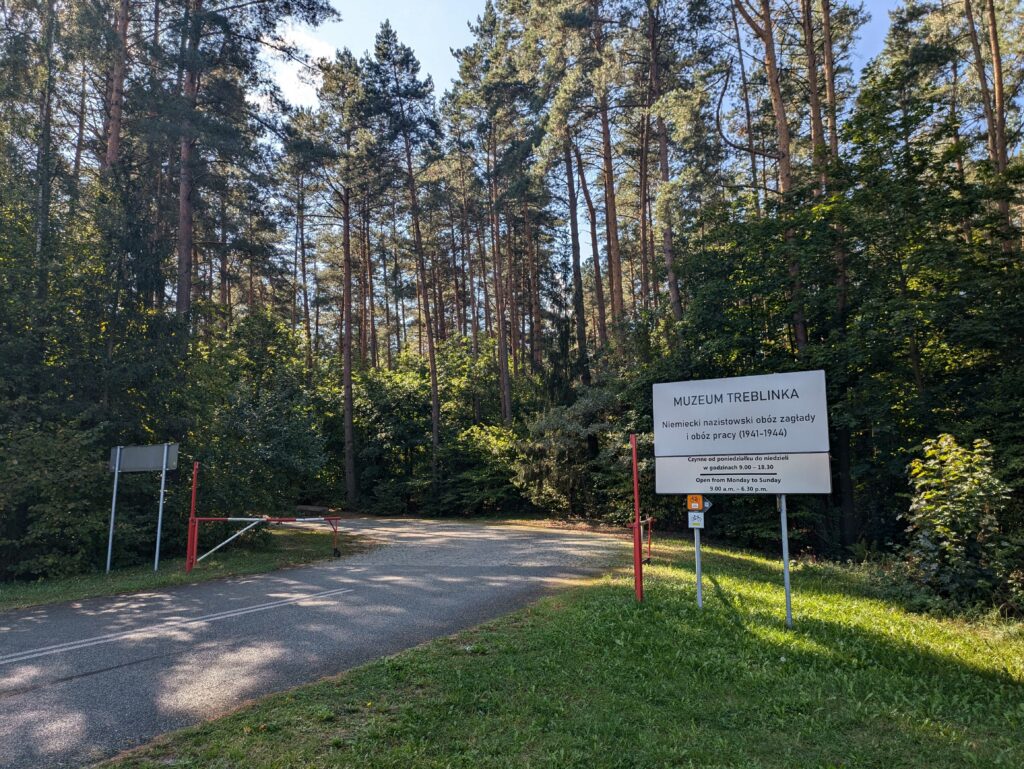
Now: Muzeum Treblinka Muzeum Walki i Męczeństwa w Treblince (Museum of Fighting and Martyrdom in Treblinka)
The museum is small. It isn’t run down or shabby. It is just a little bit old. A new one is under construction. There isn’t much to the exhibits. Is this what web commenters and tour guides were missing? There are a few documents about those imprisoned and executed in the camp. The remains of a heel of a shoe. Spoons. Bottle caps. Photos of the guards. A survivor’s story. Statistics. A diorama. There is not much to see because that is exactly the point. To erase a people and make others forget they ever lived and even that they were killed. Bury the past. Hard to make a museum to intentional absence.
Walk out to the Black Road, the Cemetery, and the Monument. Long walks through dense trees. Green. Stark concrete and stones. A place for contemplation.
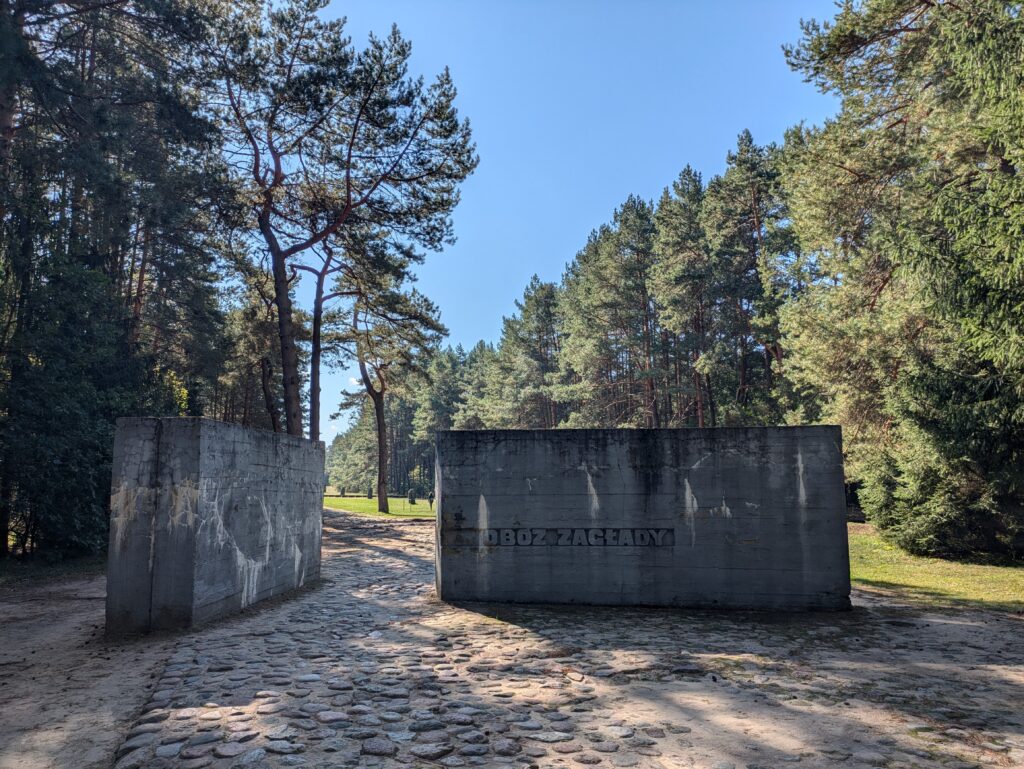
Entrance: Very few people here.
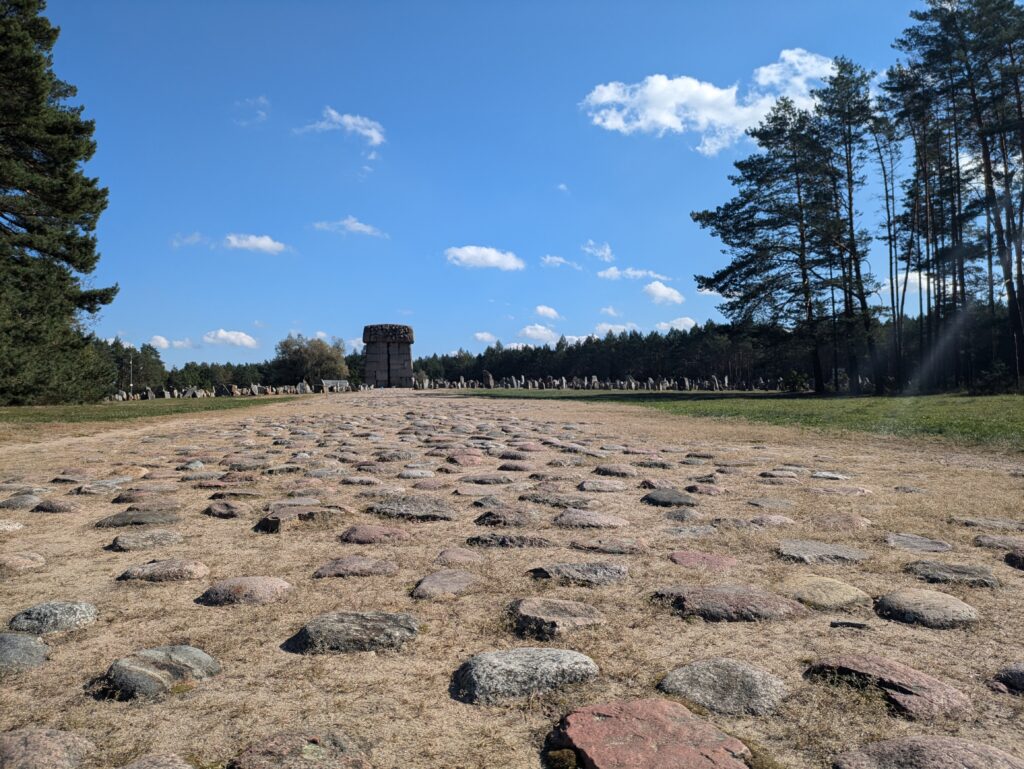
Approaching the monument.
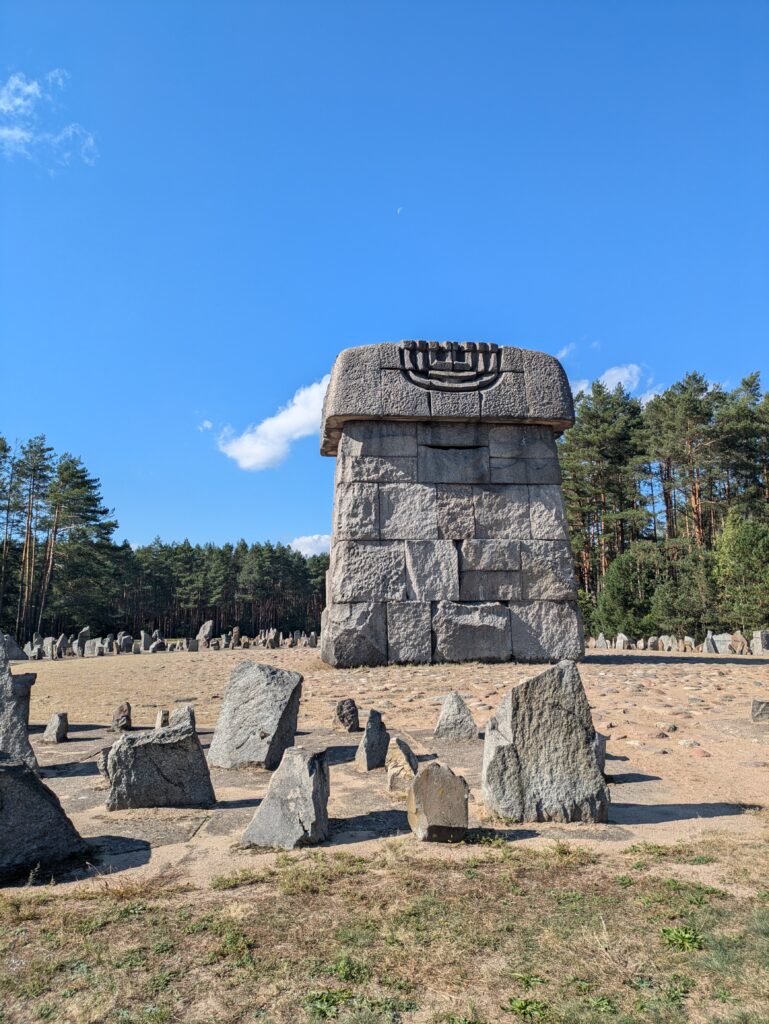
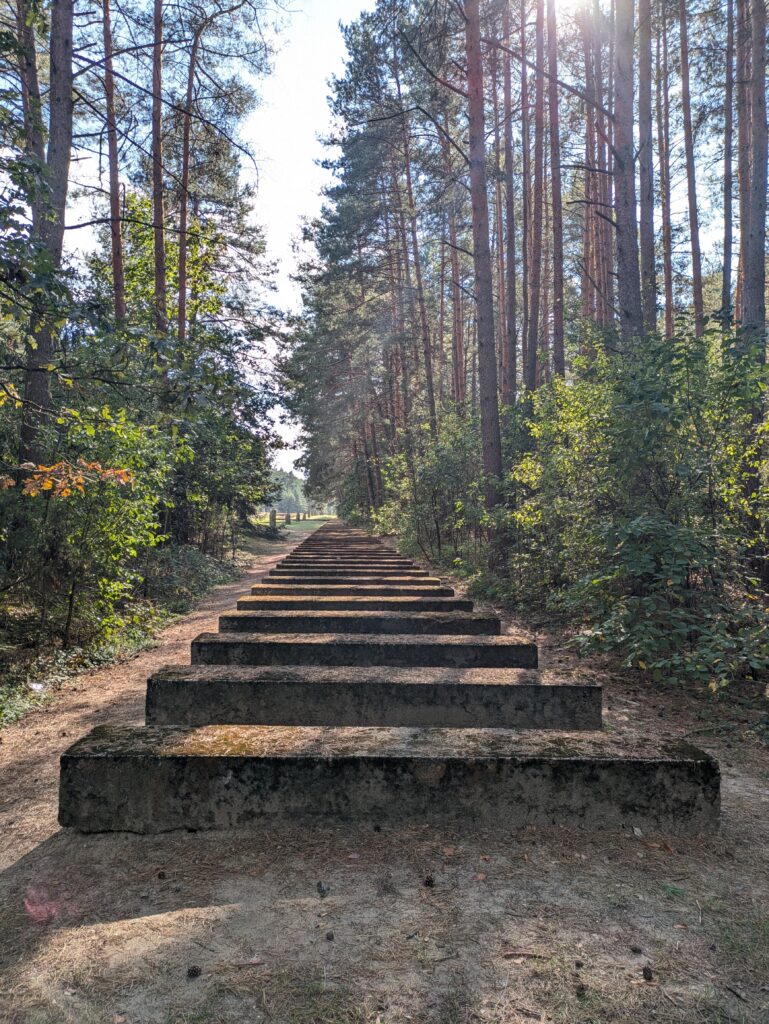
Start of the Black Road memorial.
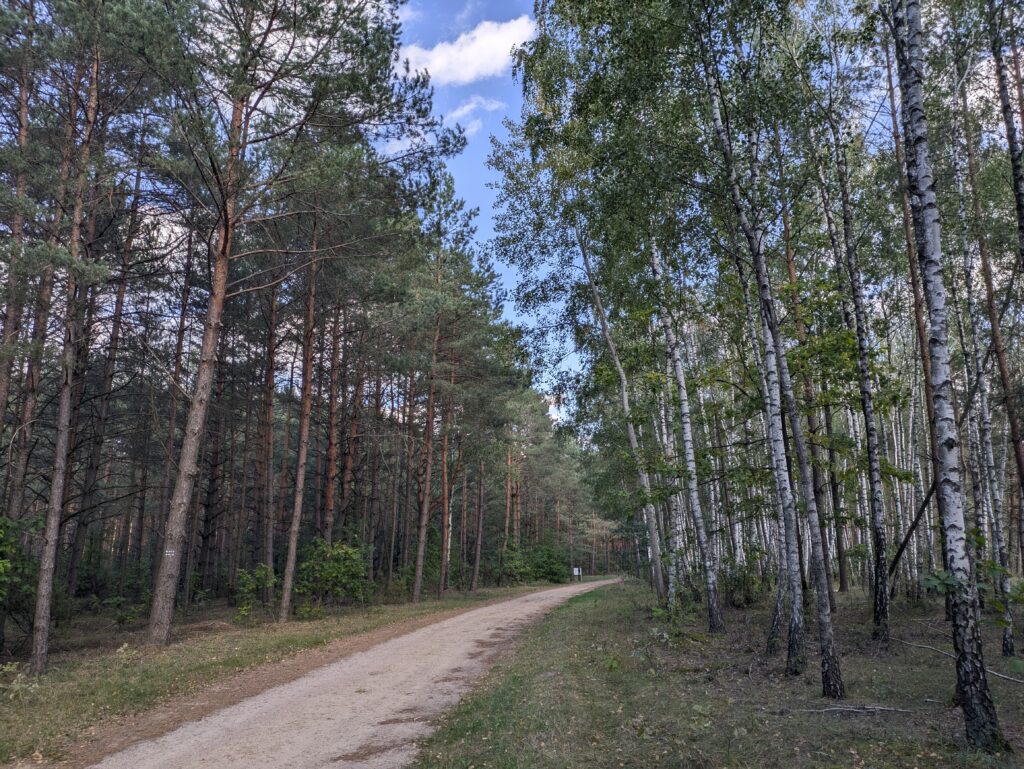
The Black Road towards the camp.
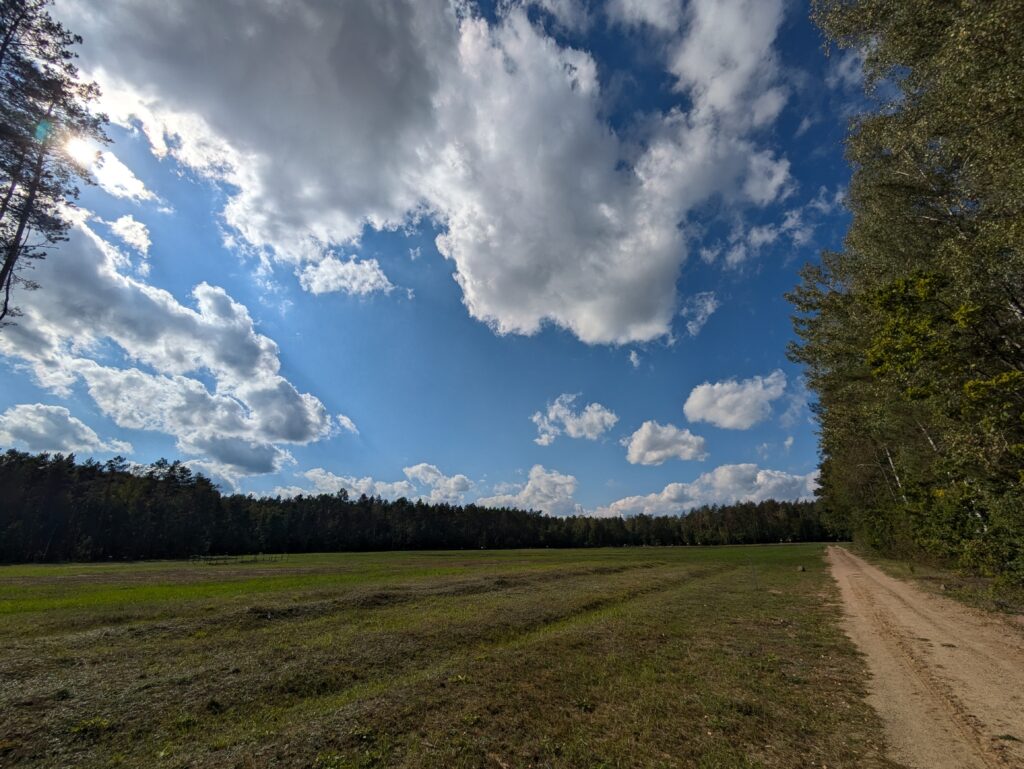
Location of the camp itself is an archaeology site. No buildings remain. It was well hidden.
My mind turned back to the small stories at Treblinka Station. How many made the train trip twice? Once as joyful girls looking forward to a summer of fun and hayrides. Again as terrorized women knowing they faced pain, cruelty, and death.
It isn’t always necessary to go to the “big” sites of remembrance. I knew the history. I didn’t know that one small, ironic story. That made the difference in contemplating Treblinka.
A long walk and train ride back to Warsaw and I plunk down with a heavy sigh in a restaurant near the station. The waitress asks me, “Are you tired?” “I walked 27 kilometers, out in the country,” I reply. She is shocked and asks where I went. “Treblinka.” She pauses and asks what I thought. “It was a beautiful place and very peaceful.” She nods and replies, “Good. We need more of that.”

EBE